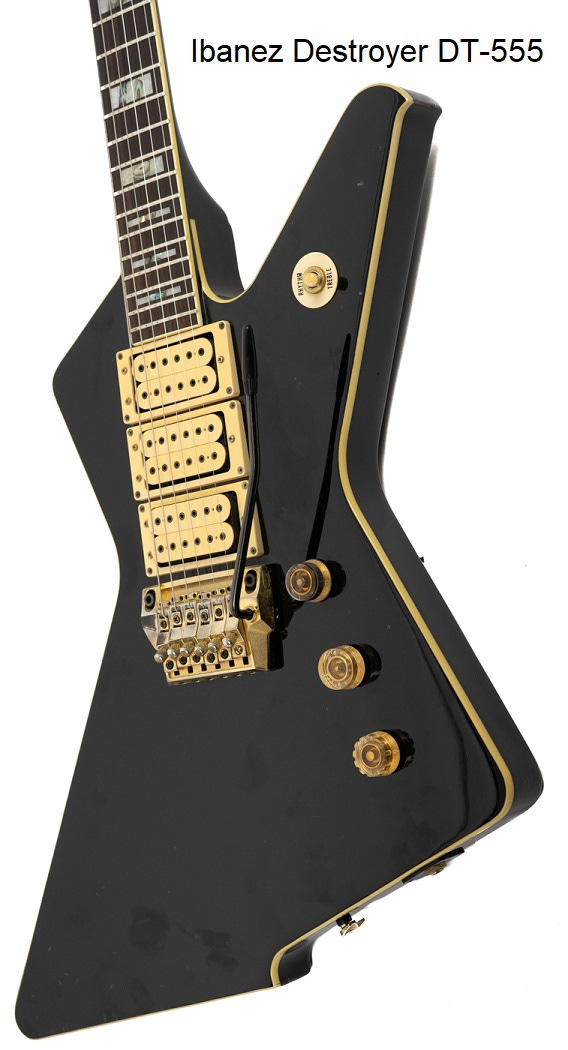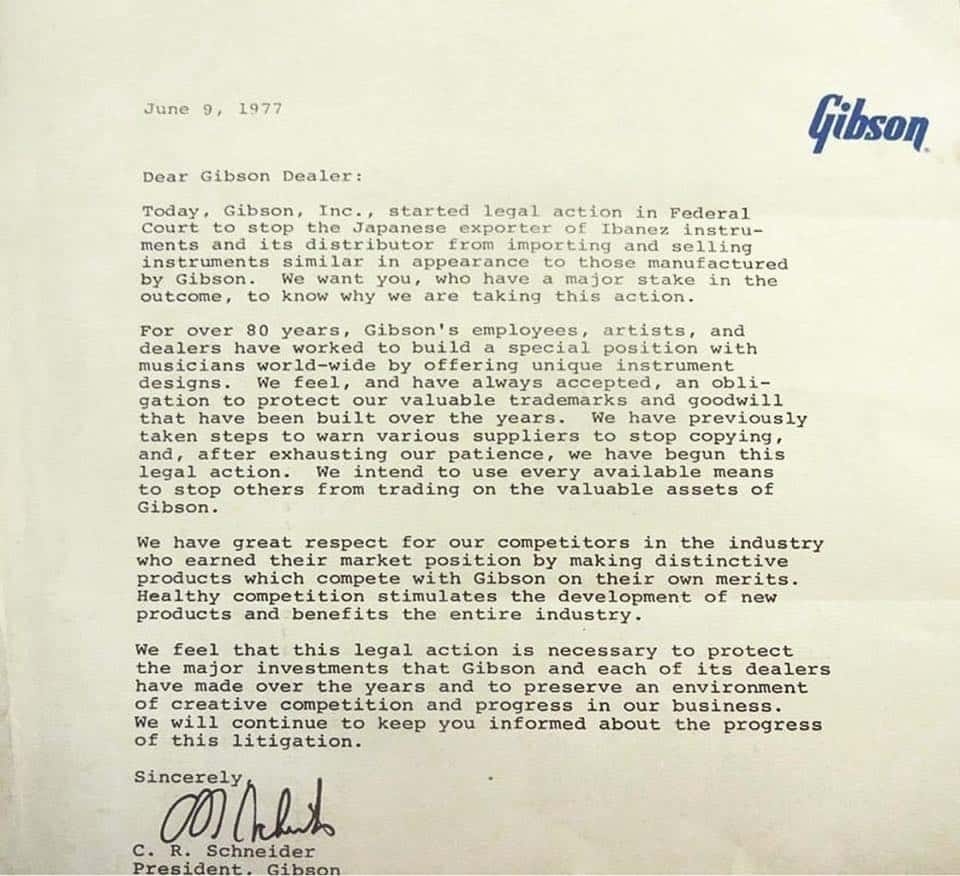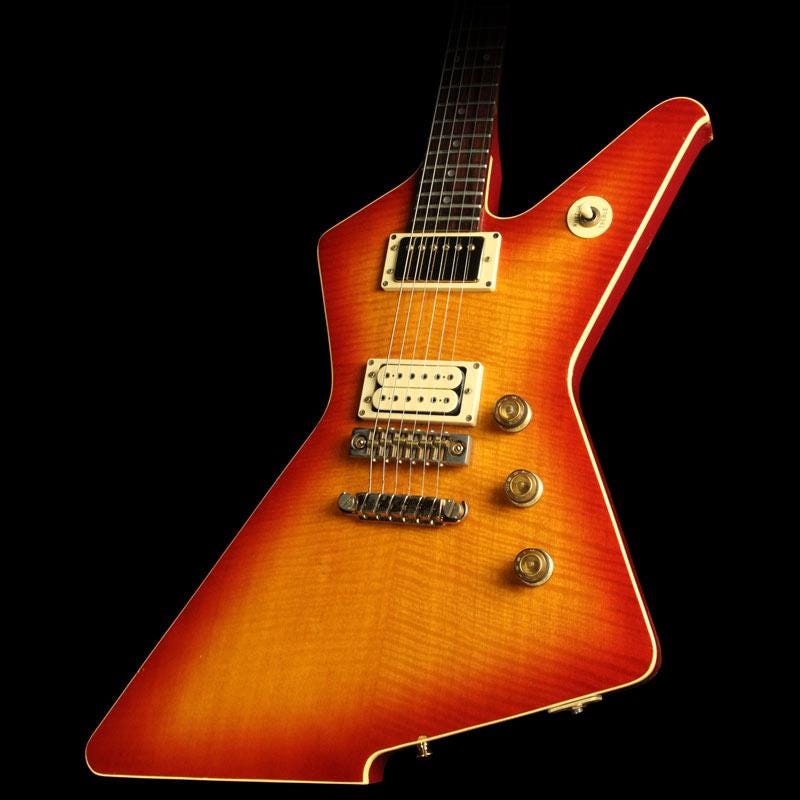One of the first Japanese guitar manufacturers was Hoshino Gakki with origins of Spanish-style acoustic guitars beginning in 1935. Version 1.0 of the brand was Ibanez Salvador, named after the famed Spanish luthier Salvador Ibanez. Eventually the company name was shortened to Ibanez.
In the 1970s Ibanez was known for making copies of major American brands such as Gibson, Fender, and Rickenbacker. So in 1975 here comes the Ibanez Destroyer, their version of a Gibson Explorer.
In 1977 Gibson filed suit against Ibanez -- “Gibson Vs. Elger”. Elger Guitars was the original North American distributor for Ibanez. The lawsuit was based on Gibson’s “open book” headstock that Ibanez was copying and the case was settled out of court.
Based on Ibanez chronology was a little break from the original Destroyer body style from 1975-78 before a revamped version appeared in 1981, the Destroyer II series. The hiatus may or may not have had anything to do with the lawsuit as Ibanez was focusing on original designs in the latter half of the decade.
The Destroyer II series changed the body in subtle ways by adding a “bill” to the treble horn and stair stepping the bottom. Not so subtle was a completely new headstock.
Phil Collen (Def Leppard) played at Destroyer DT555 that was gifted to him in 1981, two years before it was officially released by Ibanez (at least domestically). Phil wrote, “I used to salivate over three pickup Les Pauls of which I only use the outer two”, referring to his Destroyer. He used it to record the solos on Photograph, Foolin’ and Rock of Ages.
Destroyer DT555 Specs:
Birch on basswood body, Maple neck, Rosewood fretboard, Pearloid and abalone split block fret inlays, triple Ibanez V2 pickups, two volume and two tone controls, 3-way switch





